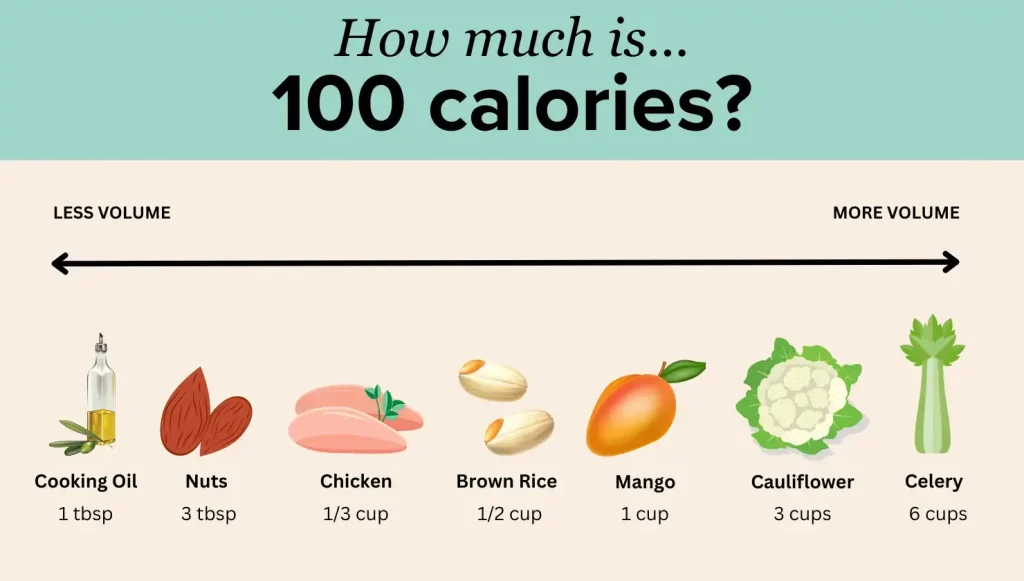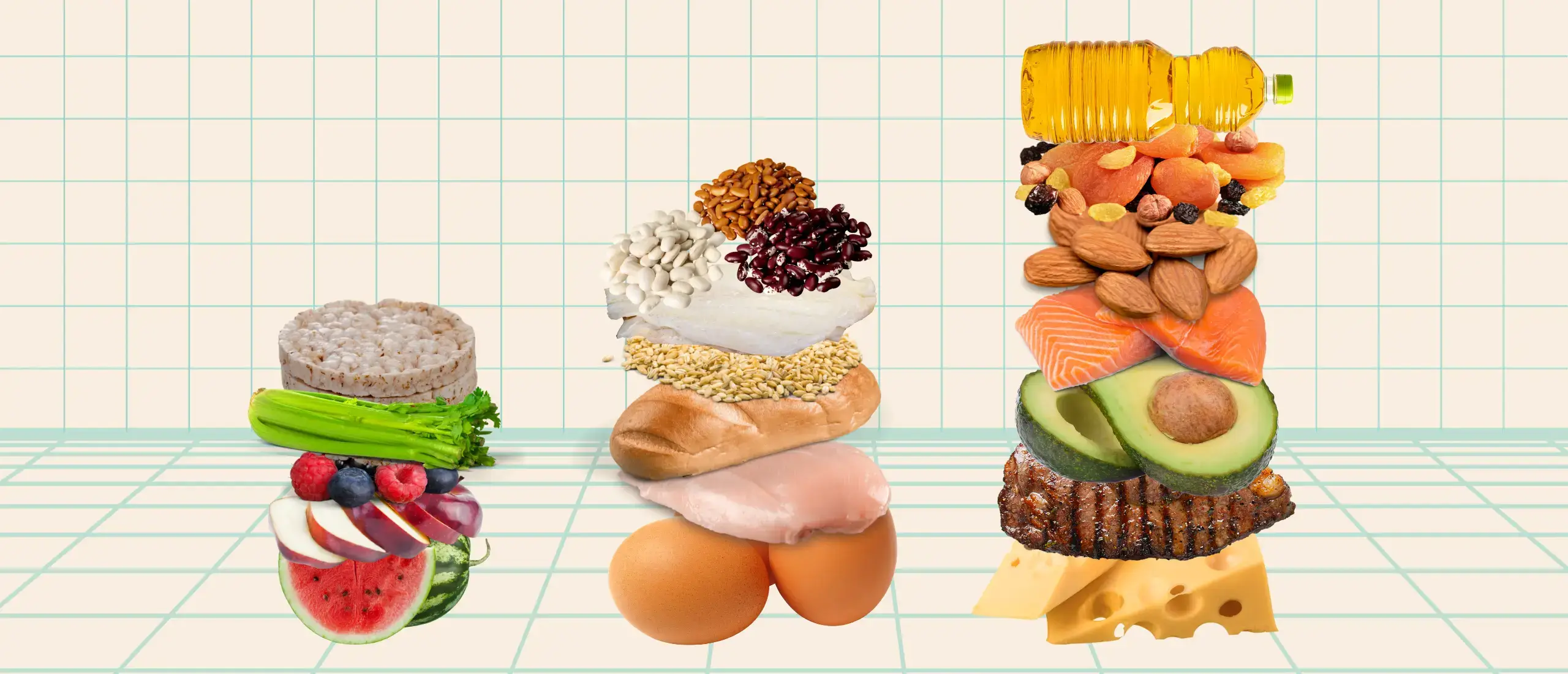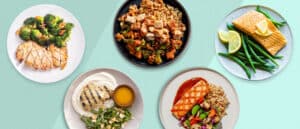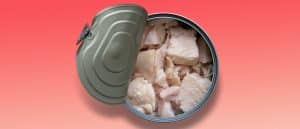Want to Lose Weight But Hate Being Hungry? Consider Volume Eating
30-Second Takeaway
- Volume eating is a dieting strategy that involves eating more high-volume, low-calorie foods like fruits and veggies, and minimizing low-volume, high-calorie foods like fat and sugar.
- By packing more fiber and water-dense fruits and veggies into your meals, you can eat more while cutting back on calories.
- Because volume eating can reduce calorie intake it can help with weight loss.
- Protein and healthy fats aren’t considered high-volume, low-calorie foods, but failing to eat a balanced diet can lead to hunger and cravings, tank energy, and lead to nutrient deficiencies.
Losing weight is rough. No one actually wants to weigh their food, obsess over calories, or cut out entire food groups only to be hungry at the end of the day. But thanks to volume eating you might not have to.
Volume eating is a method that prioritizes increasing low-calorie, high-volume foods so you stay full while keeping calories in check. Does it work and is it safe? We tapped registered dietitian Imashi Fernando, MS, RDN, CDCES to find out.
What is Volume Eating?
“Volume eating emphasizes eating foods with a high water and fiber content, like vegetables,” explains Fernando. High-volume, low-calorie foods like zucchini and cauliflower help you feel full while keeping your calorie intake low. “The idea is that you can eat as many high-volume, low-calorie foods as you want without having to watch portion sizes or count calories,” Fernando adds.
Volume eating can be as simple as using a mix of regular pasta and zucchini noodles in a bowl of spaghetti, but the traditional volume eating diet is a little more involved. The strategy is to load up your meals with high-volume, low-calorie foods (fruits and veggies), include moderate amounts of foods that land in the middle on volume and calories (whole grains and lean protein), and stay mindful of your portions with low-volume, high-calorie foods (fat and sugar).
High-Volume vs Low-Volume Foods
The key difference that makes a food high-volume versus low-volume is its calorie density—which refers to the amount of calories a food provides relative to its volume. Calorie-dense foods are foods where you’ll end up eating more calories for less food, and vice versa. Here’s how it shakes out:

Low-volume, high-calorie foods
Low-volume foods pack more calories per gram, A small serving can pack a significant number of calories. These foods tend to be high in fat or sugar. Some examples of low-volume foods include:
- Oils (including heart-healthy oils like olive oil or avocado)
- Dried fruits
- High-fat dairy like cheese and butter
- Nuts and nut butters
- Snack foods like chips and candy
- Fruit juice and soda
- Sugar (including more nutritious choices like maple syrup and honey)
- Olive oil
- Fatty fish like salmon
- Fatty cuts of red meat like ribeye steak
- Avocado
- Seeds
High-volume, low-calorie foods
In contrast, high-volume foods contain high amounts of fiber and water, so they provide fewer calories per gram. You can eat more of them, but down a relatively small number of calories. Some examples of high-volume foods include:
- Fruits like berries, apples, and watermelon
- Non-starchy vegetables like zucchini, celery, and cucumber
- Cruciferous vegetables like broccoli, cauliflower, and kale
- Puffed grains like rice cakes and popcorn
- Egg whites
Moderate-volume, moderate-calorie foods
Tons of foods fall somewhere in the middle. These nutritious foods are staples of a healthy diet, and shouldn’t be minimized simply because of their volume, says Fernando. Examples include:
- Whole grains like oats and brown rice
- Lean meat, eggs, and fish
- Beans and legumes
- Low-fat dairy
- Bread
Is Volume Eating Healthy?
Yes and no. Since volume eating can help you maintain a calorie deficit, it might help you lose weight. Most of the foods that top the low-volume, high-calorie list are processed foods, which are a good idea to cut back on anyway, since ultra-processed diets can lead to weight gain (1) and over time up your risk for cardiovascular disease, type 2 diabetes, and cancer (2, 3, 4).
That said, there are downsides. “Volume eating encourages limiting foods with high nutritional value simply because they are more energy dense,” Fernando explains. For example, because fats contain more calories than carbs or protein (one gram of fat contains nine calories, versus the same amount of carbs or protein contains only four calories) heart-healthy fats like salmon, olive oil, avocado, nuts, and seeds get lumped in with the foods to limit. “Healthy fats are an essential element of a balanced diet,” she adds.
Benefits of Volume Eating
There are a load of benefits that come along with volume eating. Here’s what to expect:
Increases satiety and fullness
Focusing on nutrient-dense, high-volume foods can help to keep you full and satisfied for longer. To reap the biggest benefit, include satiating protein and fat in your meals. “Eating a very large salad with little protein or healthy fats may make you feel full at the moment, but leave you feeling unsatisfied and increase cravings just a few hours later,” says Fernando.
Allows you to eat more
Volume eating allows for larger portions (think: Full bowls and plates). However, the point isn’t to power down watermelon and apples to avoid calories. Make sure you’re getting enough fuel, and not just packing down more volume to avoid calories, says Fernando.
Helps with weight loss
“Volume eating promotes a heavy plant-based diet, which has been shown to help with weight loss and metabolic health,” explains Fernando. Plus, volume eating is also a way to manage calorie intake without having to count calories.
Increases nutrient density
Because volume eating involves eating more nutrient-dense fruits and veggies, it can help boost your fiber, vitamin, mineral, and antioxidant intake. For the most benefit, look for local, organic, colorful fruits and vegetables, which one study suggests might contain more beneficial nutrients than their non-organic counterparts (5).
Improves gut health
Volume eating improves gut health from both sides of the coin: “Ultra-processed foods that are high in added sugars and saturated fats are linked to dysbiosis (an imbalance of gut bacteria), which leads to gut inflammation, and can promote chronic systemic inflammation, which can increase your risk of weight gain, insulin resistance, and high blood sugar,” says Fernando.
On the other hand, the healthy bacteria in your gut feed off fiber. So, eating more high-fiber, high-volume foods can boost gut health (6). People who follow a diet rich in fiber and prebiotic foods have a lower risk of irritable bowel syndrome, leaky gut, and colon cancer (7, 8).
Boosts lifespan
Longevity experts agree that moderate calorie restriction can increase lifespan. The leading theory is that eating less can trigger autophagy—a process that recycles damaged cell parts to enhance their performance (9), which keeps you healthy (10). One study found that eating fewer calories appears to slow the pace of aging and increase longevity in healthy adults (11). That said, there’s a calorie sweet spot. “Over restriction of calories (to the point of mild starvation) is not healthy and can have the opposite effect,” warns Fernando.
Common Volume Eating Mistakes
Do it wrong and volume eating has its downsides. Here’s what to look out for.
Not eating enough calories
“Over restriction is the biggest downfall of volume eating,” says Fernando. “Not eating enough can make you feel tired, affect your mood, and make it harder to build muscle.” She recommends striking a more evenly balanced plate by making high-volume veggies like cauliflower and kale the central focus, but still including appropriate portions of whole grains, protein, and healthy fats.
Neglecting important nutrients
Fernando warns that by limiting fats, you may miss out on the absorption of essential fat-soluble vitamins A, D, E, and K. Certain B vitamins like B12, B6, and folate help maintain your energy levels, brain function, and metabolism. But since B vitamins are mostly found in whole grains and animal products that might get skipped on for less nutrient-dense veggies in a traditional volume eating diet.
Overdoing it on fiber
Fiber is healthy, but it can cause gastrointestinal distress if you add too much to your diet too soon. “People with pre-existing GI conditions like IBS may not tolerate such a high fiber diet. But really, introducing a large volume of fiber can be uncomfortable for anyone because gut bacteria feed on it in the colon which produces gas and may cause bloating,” says Fernando. Slowly increase your fiber intake over time, and drink plenty of water to help keep the bulk moving through your gut.
How to Start Volume Eating
Volume eating can be a useful strategy for weight loss and overall health, so long as you don’t cut out major food groups. “Think of volume eating as adding volume, not taking other foods away. This allows you to stay off calorie counting, while ensuring you get enough fuel to get through the day,” Fernando explains.
Here’s a few easy ways to add volume to your meals without being restrictive:
- Add veggies to your morning scramble
- Add a side salad to every meal
- Add zucchini noodles to a bowl of pasta with meat sauce
- Add apples or berries to your oatmeal
- Add cauliflower in mashed potatoes
For the biggest impact, Fernando recommends variety. Keep your fridge stocked with fresh, colorful produce so you don’t miss a beat. “Talk to a dietitian if you need guidance on building a healthy eating plan that emphasizes high-volume foods,” she says.
The Bottom Line
Volume eating is a practical way to cut calories while adding nutrient-dense fruits and vegetables to your plate. That said, adding high-volume, low-calorie foods to your diet should be used as a tool to increase satiety and nutrient-density, not reduce your intake of essential food groups like protein and healthy fats. For best results, aim for balanced plates that incorporate more high-volume, low calorie fruits and vegetables, and also contain reasonable portion sizes of all three macros.
About the Expert: Imashi Fernando works in a large hospital system as a clinical dietitian and provides one-on-one nutrition counseling through her virtual private practice, Brown Sugar Nutrition PLLC. She holds a master’s degree in Nutritional Sciences from the University of Washington.
References
1. Hall, K. et al. (2019). Ultra-Processed Diets Cause Excess Calorie Intake and Weight Gain: An Inpatient Randomized Controlled Trial of Ad Libitum Intake.
2. Lopez-Jimenez, F. et al. (2022). Obesity and Cardiovascular Disease: Mechanistic Insights and Management Strategies. A Joint Position Paper by the World Heart Federation and World Obesity Federation.
3. Yashi, K. et al. (2023). Obesity and Type 2 Diabetes.
4. Centers of Disease Control and Prevention (2023). Obesity and Cancer.
5. Crinnion, W. et al. (2010). Organic Foods Contain Higher Levels of Certain Nutrients, Lower Levels of Pesticides, and May Provide Health Benefits for the Consumer.
6. Fu, J. et al. (2022). Dietary Fiber Intake and Gut Microbiota in Human Health.
7. Akbar, A. et al. (2023). High Fiber Diet.
8. Usuda, H. et al. (2021). Leaky Gut: Effect of Dietary Fiber and Fats on Microbiome and Intestinal Barrier.
9. Aman, Y. et al. (2021). Autophagy in Healthy Aging and Disease.
10. Jia, G. et al. (2015). Autophagy: A Housekeeper in Cardiorenal Metabolic Health and Disease.
11. Waziry, R. et al. (2023). Effect of Long-Term Caloric Restriction on DNA Methylation Measures of Biological Aging in Healthy Adults From the CALERIE Trial.
















